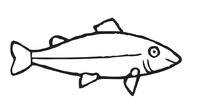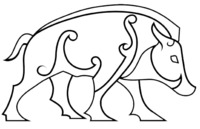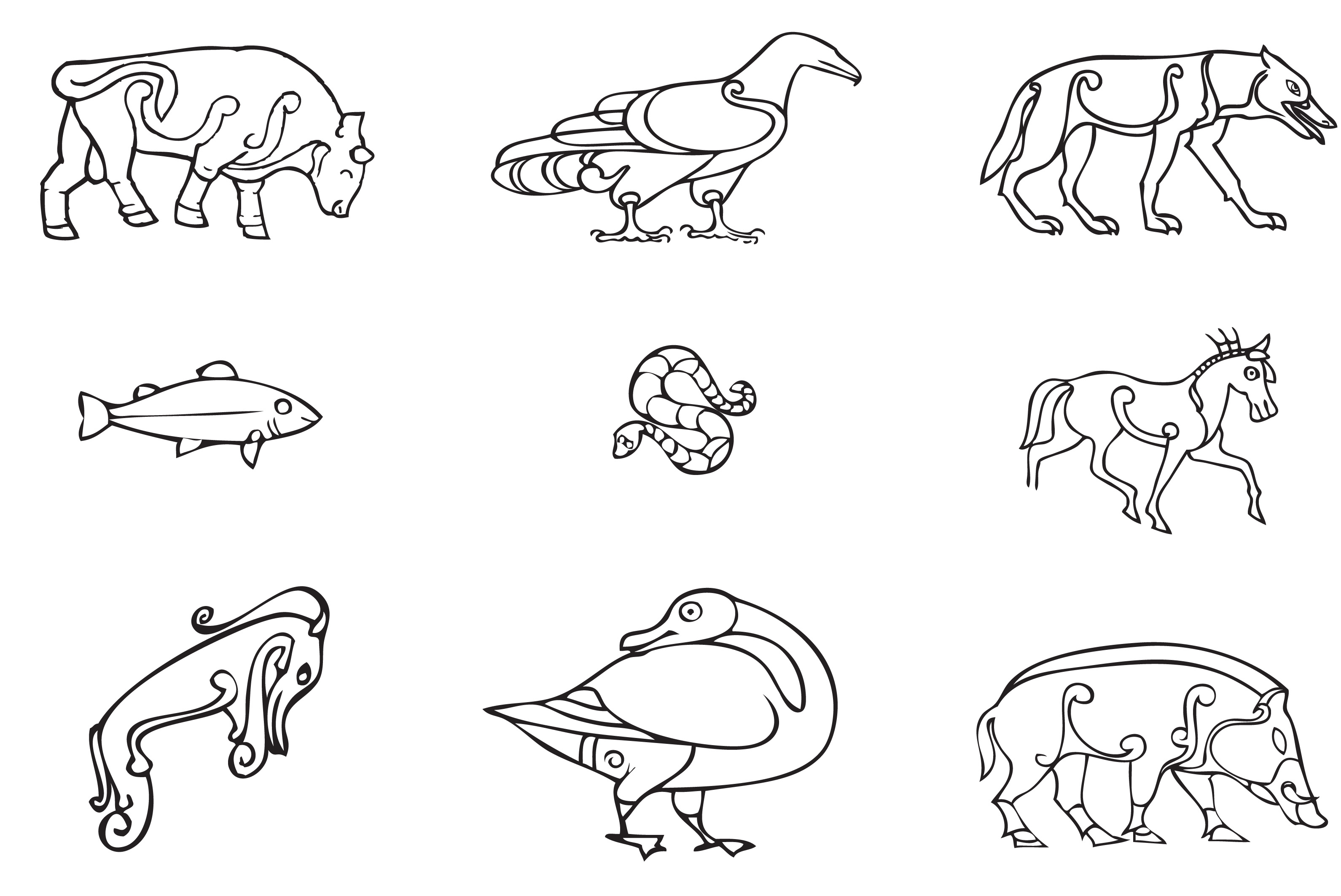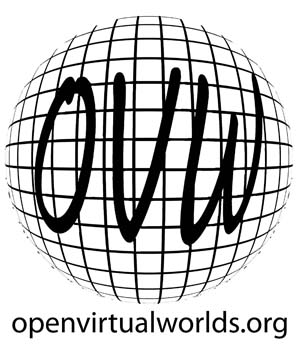Title
animals map.jpg
Embed
Copy the code below into your web page
Image Map
Bull
 | The bull was, and still is, a symbol of fertility, wealth, and status. The bull likewise symbolizes ties to the land, ancestry, and kinship. A good bull was a sign of wealth in a culture that revolved around farming, the prestige of a clan’s bull was closely linked to that of its king, and to the prosperity of its people. Although Pictish symbols usually appear in pairs, a few have only been found on their own. These include the Bull and the Bear. |
Fish
 | The fish symbol is also known as the Salmon, it may be symbolic of wisdom and prophecy. Salmon figure prominently in Celtic mythological tales, they often inhabited the sacred wells, feeding on the fruits (often, hazelnuts) of the tree of life. |
The Pictish Beast
 | The most common animal symbol of all is the Pictish Beast. The Pictish Beast (sometimes Pictish Dragon or Pictish Elephant) is an artistic representation of an animal depicted on Pictish symbol stones. It is not easily identifiable with any real animal, but resembles a seahorse, especially when depicted upright. Suggestions have included a dolphin, a kelpie and even the Loch Ness Monster. Recent thinking is that it may be related to the design of dragonesque brooches, S-shaped pieces of jewelry from the mid-1st to 2nd century CE that depict double-headed animals with swirled snouts and distinctive ears. These have been found in southern Scotland and northern England. The strongest evidence for this is the presence on the Mortlach 2 stone of a symbol very similar to such a brooch, next to and in the same alignment as a Pictish Beast. The Pictish Beast accounts for about forty per cent of all Pictish animal depictions, and so was likely of great importance. It is thought that it was either an important figure in Pictish mythology, and/or a political symbol. |
Eagle
 | A good example of the Eagle Symbol can be seen on The Clach an Tiompain (Sounding Stone) or Eagle Stone, a small Class I Pictish stone, located on a hill on the northern outskirts of Strathpeffer in Easter Ross, Scotland. |
Snake
 | The serpent or snake, is thought to be a symbol of medicine and healing, although this is unknown. The snake symbol can also be found with a Z-rod through it. |
Goose
 | A rare example of the Goose symbol can be seen on the Easterton Of Roseisle, Class I Pictish Symbol Stone from Moray, now housed in National Museum Scotland, Edinburgh. The stone slab features a goose, with neck arched back over body, above a salmon. |
Wolf
 | A good example of the Wolf Symbol can be seen on the Ardross 'wolf' Stone, now housed in Inverness Museum. |
Horse
 | The horse was a tremendously important animal to the Celtic tribes, and its domestication transformed the Celtic culture Horses were used for meat and milk and provided labor for farming and transportation, making for huge advances in hunting and war-making. The horse was so important to the Celts it was associated with the sun god, who often appeared as a horse with a human face. |
Boar
 | The boar is an emblem of fertility, fearlessness, and strength, but also stubbornness, war, and chaos. As the meat of the boar is prized, it is also a symbol of hospitality. |


